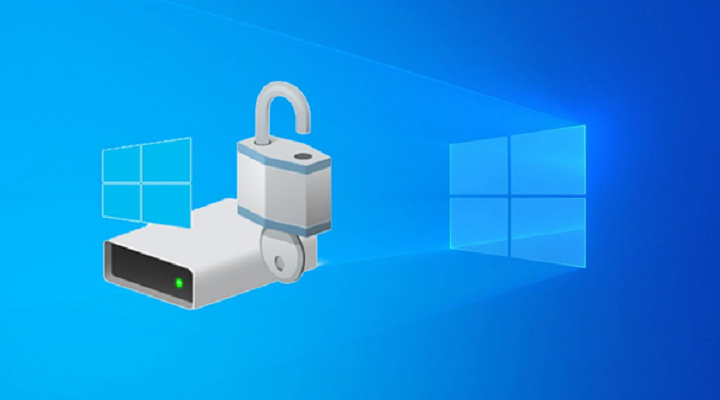What is Bitlocker?
A security and encryption feature for Microsoft Windows that comes with some more recent versions of Windows is known as BitLocker Drive Encryption, or simply BitLocker.
All of the information on the drive where Windows is installed can be encrypted by users using BitLocker, preventing theft or unauthorised access.
Background Information
Microsoft BitLocker strengthens the system and file security by limiting unauthorized data access.
It employs 128- or 256-bit keys and the advanced encryption standard algorithm. The unique key management and on-disk encryption methods are combined in BitLocker.
BitLocker was first introduced with Windows Vista in 2007, despite that Microsoft improved BitLocker starting with Windows 10 version 1511, by adding additional encryption algorithms, group policy settings, detachable data drives and operating system discs.
For Windows 10,11, and Server 2016 and later, this update is applicable. Education editions, Windows Pro, Enterprise, all support BitLocker.
Keep reading to find out how to recover data from bitlocker encrypted drive!
How does it work?
By ensuring the integrity of boot configuration data and early boot components, as well as by encrypting all user and system files—including swap and hibernation files—on the operating system drive.
On lost or stolen devices, BitLocker can be used to limit unauthorised data access.
How fixed and portable data drives interact with BitLocker
BitLocker can be used to encrypt a hard drive's full contents. Use Group Policy to make it necessary for BitLocker to be turned on before a computer can write data to a disc.
A data drive can support more than one unlock mechanism, and BitLocker can be set to use a variety of unlocking techniques for data drives.
How To Use It? (Windows 10)
Use this article to set up and configure BitLocker encryption on Windows 10 to add an extra degree of security if you have a laptop or device that saves sensitive data.
Steps To Follow
To enable BitLocker on a device, use these steps:
- Launch Start.
- To launch the application, enter "Control Panel" and click the first result.
- Select System and Security by clicking.
- Select BitLocker Drive Encryption from the menu.
- Click the Turn BitLocker option under the "Operating system drive" section.
- Choose the recovery key saving option from the available options.
- Then press the Next button.
- Decide how much drive space should be encrypted.
- Select one of the two encryption choices.
- Then press the Next button.
- Examine the option to Run BitLocker System Check.
- Select "Continue" from the menu.
- Select "Restart now" from the menu.
After you finish the procedures, BitLocker will turn on, the device will restart, and you won't be asked for a decryption password to continue running Windows 10 after that.
The drive will have a lock icon, and the label will say BitLocker after the encryption operation is finished.
Check This Also - How To Recover Data From A Corrupted BitLocker Encrypted Drive.
Recover data without password and recovery key
Imagine that you failed to use the BitLocker password and recovery key to access the encrypted drive.
There are a lot of bitlocker recovery key generator, but honestly, none of them would work because Bitlocker encryption doesn’t prevents third parties from accessing your files in the first place.
Instead, you can re-format the encrypted drive and sacrifice all of your data in order to get rid of BitLocker encryption.
To do this, you must have administrative permission to launch the command prompt. Simply press Win+X to open the command prompt by selecting Run as administrator.
Then enter the following command: manage-bde -protectors X: -get (where X is the Encrypted Drive)
You can view the Recovery ID and Recovery Key by employing this technique. You are able to unlock and decrypt your drive using that 48-digit code.
FAQs
Here are some frequently asked questions about BitLocker:
1. Should I use BitLocker Encryption?
A: In the event that your physical disc or machine is lost, Bitlocker, a volume encryption feature, will protect your data by encrypting it (especially for laptops).
In modern computers, it has little effect on performance either. Therefore, I advise enabling BitLocker.
2. What is the disadvantage of BitLocker?
A: The encrypting and decrypting portion of the software causes the computer to run a little slowly.
Depending on the size of the hard disc, this step may also take a long time to finish.
The recovery key must always be kept safe; otherwise, the user risked never being able to unlock their drive.
3. Can BitLocker be trusted?
A: Bitlocker is generally safe and is utilized by businesses all around the world.
Keys cannot be simply extracted from the TPM device. Attacks from evil hackers are also lessened because TPM will check the pre-boot components to make sure nothing has been tampered with.
To Wrap It Up!
The BitLocker password or recovery key recovery is your only option if your BitLocker-encrypted drive contains crucial data that you simply cannot afford to lose.
Because there’s no way to bitlocker recovery key bypass.
On the other hand, you can try Re-Formatting the BitLocker-Encrypted drive, which is the speediest option to remove encryption from BitLocker.
Thank you for reading up till here. I hope you found the given information resourceful!
